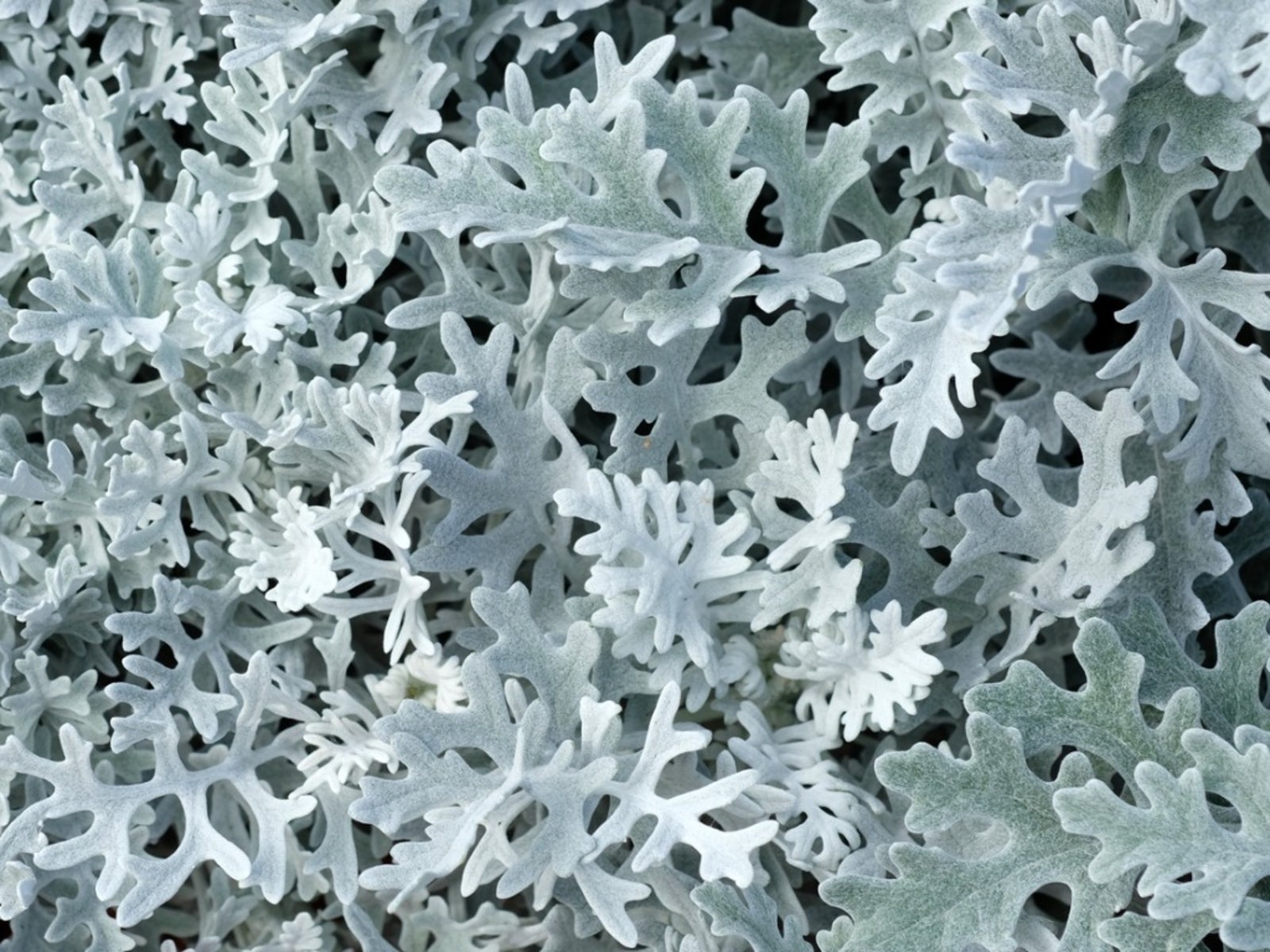How To Grow And Care For Dusty Miller In The Garden
Dusty miller has silvery-gray foliage that’s wooly and soft, and adds a lacy, distinctive touch to any bed, border or garden.

Dusty Miller: Complete Plant Care And Growing Guide
Previously known as Jacobaea maritima, dusty miller is the common name for Senecio cineraria. Dusty miller is an herbaceous perennial often used as a bedding annual. Dusty miller flowers are inconspicuous, but the foliage has tiny fine hairs that give them a wooly, silvery gray appearance. With these striking leaves, dusty miller looks nice set against colorful flowers.
Quick Facts
- Botanical name:
- Sinecio ciny garderaria
- Height: 6 to 24 inches (15 to 61 cm)
- Spread: 6 to 24 inches (15 to 61 cm)
- Sun exposure: Full sun to partial shade
- Soil requirements: Well-drained
- Hardiness zones: 8 to 10
- When to plant: Spring
Dusty Miller Care
Once established, a dusty miller plant doesn’t need much care or maintenance. Set it up in the right conditions and do a little watering and pruning to keep it happy.
Light
Dusty miller does best in full sun but will grow in partial shade. Too much shade can make it leggy and result in greener leaves.
Water
Provide adequate moisture after planting and as roots get established, and then only as needed. Dusty miller tolerates drought well.
Temperature & Humidity
Gardening tips, videos, info and more delivered right to your inbox!
Sign up for the Gardening Know How newsletter today and receive a free copy of our e-book "How to Grow Delicious Tomatoes".
Native to the Mediterranean region, dusty miller grows best in warm to hot temperatures and dry conditions. It will only be perennial in USDA zones 8 through 10 in North America. In colder regions, grow it as an annual.
Soil
Dusty miller needs soil that drains very well. It can grow in poor soils but prefers moderately rich soil. Excess moisture will cause root rot, but it will tolerate dry conditions and even some drought.
Fertilizer
Fertilizing isn’t necessary for this light feeder. If the soil is very poor, add organic material or a balanced fertilizer when planting dusty miller.
Problems, Pests & Diseases
Dusty miller doesn’t suffer from any major diseases or pest infestations. Avoid standing water to prevent root rot, the most common issue.
Pruning
Pinch back dusty miller stems a few times during the growing season to encourage bushier growth and to prevent legginess. You can also remove flowers as they appear to keep focus on the foliage.
Propagation
Dusty miller is easy to grow from seed, but you can also propagate it by stem cuttings. Cut a few inches of stem in spring and remove the lower leaves. Set the top in moist potting mix. Keep the mix and the cutting moist and warm for several weeks until new leaves begin to grow and roots form.
Repotting
Dusty miller grows well in beds and containers. If growing it in a container, one pot should be adequate for a season. You shouldn’t need to repot it as an annual. If you are keeping the plant year after year, transfer it to a larger container when you see roots coming out of the drainage holes.
Dusty Miller Varieties
Dusty miller comes in a few different varieties. Dusty miller “Silver Dust” grows a little shorter than other varieties and has deeply lobed leaves. “Cirrus” is a little taller with only slightly lobed leaves. “Silver Lace” leaves are airy, light, and very lacy.
Dusty Miller Companion Plants
The sliver foliage of dusty miller perfectly sets off colorful, showy flowers on other plants. Pair it with low and spreading flowering plants, like wave petunias and purple sweet alyssum. Dusty miller also makes a good edging plant for beds with tall, bright flowers like zinnias. It is a pretty accent in mixed containers with flowers and even dark foliage plants.
Frequently Asked Questions
Is Dusty Miller a Perennial?
Dusty miller is a perennial in warm climates. In North America it is hardy in zones 8 through 10. In colder zones, it grows as an annual.
Will Dusty Miller Spread?
Dusty miller grows in clumps. Each clump spreads a little but rarely more than 2 feet (61 cm) wide.

Becca Badgett was a regular contributor to Gardening Know How for ten years. Co-author of the book How to Grow an EMERGENCY Garden, Becca specializes in succulent and cactus gardening.
-
 Looking For Plants To Give You The Soft And Fuzzies? Try These 5 Fuzzy Leaf Plant Options
Looking For Plants To Give You The Soft And Fuzzies? Try These 5 Fuzzy Leaf Plant OptionsLovers of texture, drama, silver foliage and tactile plants will adore these special sensory garden additions. These fuzzy leaf plant options will leave you all aglow
By Susan Albert
-
 Get Ready For A Summer Of Hummers! Grow These Full Sun Hummingbird Plants and Flowers
Get Ready For A Summer Of Hummers! Grow These Full Sun Hummingbird Plants and FlowersIf you’re lucky enough to enjoy a sunny backyard, make sure you are maxing out on your pollinator opportunities and grow these full sun hummingbird plants and flowers
By Tonya Barnett
